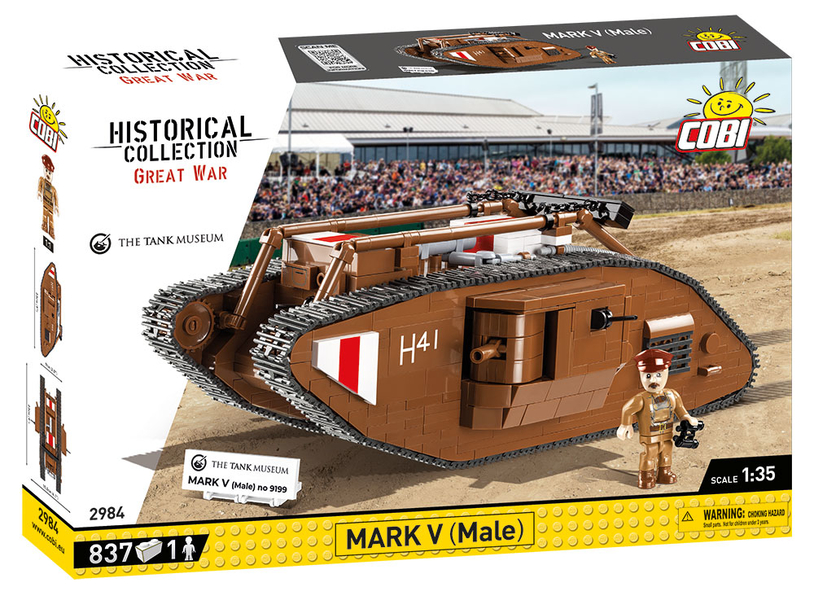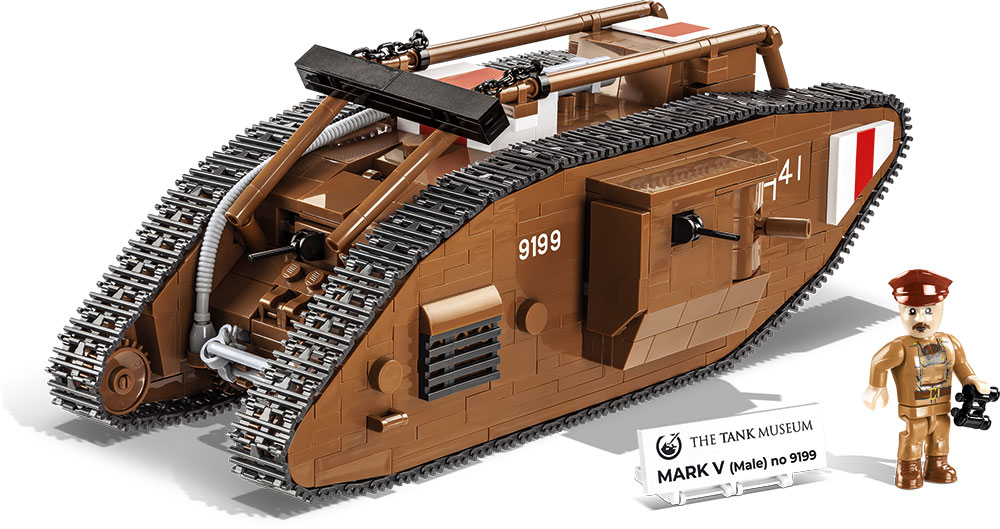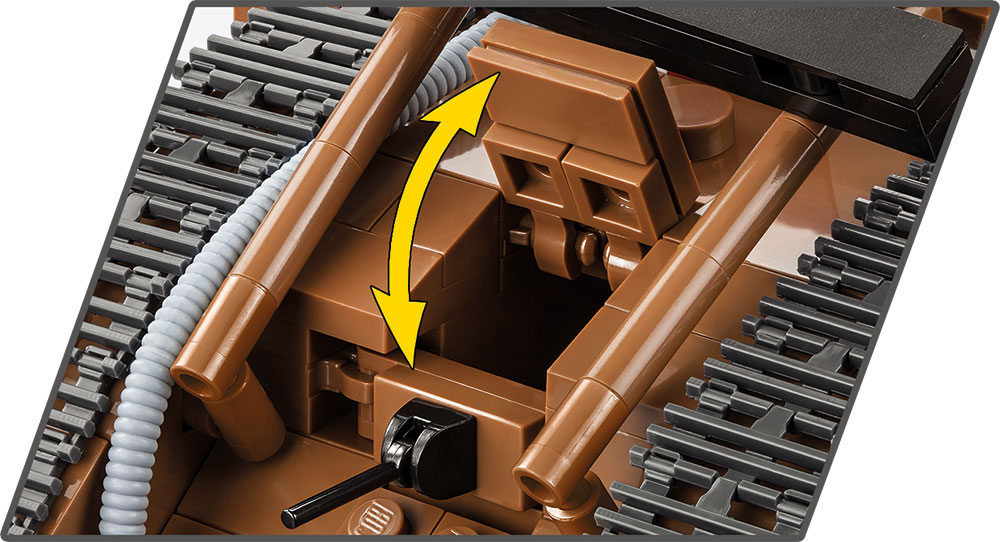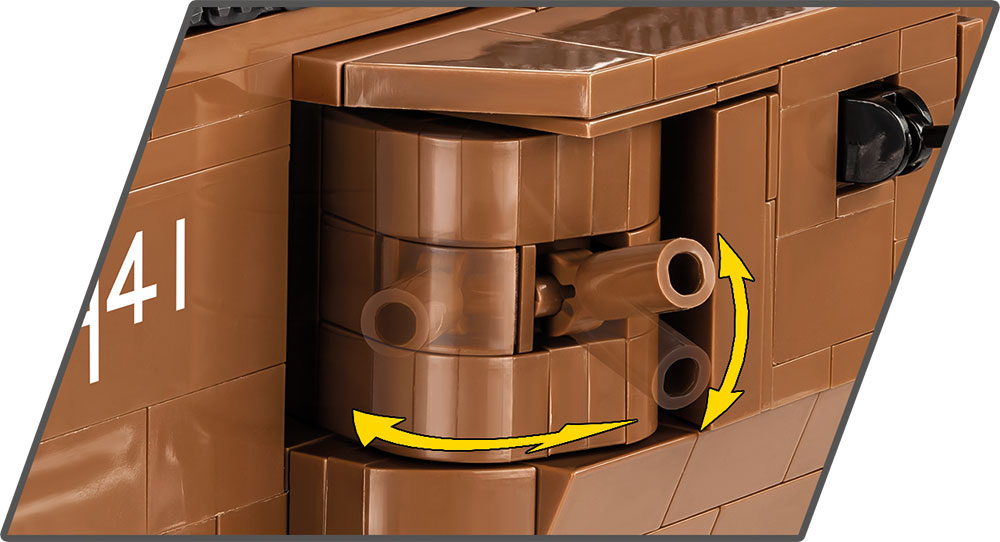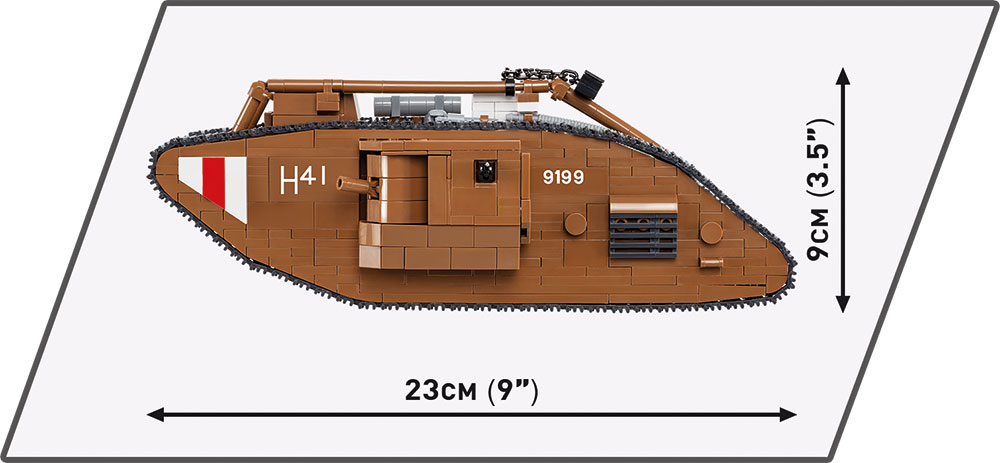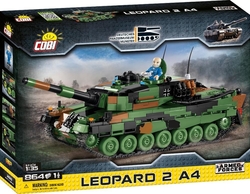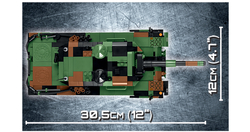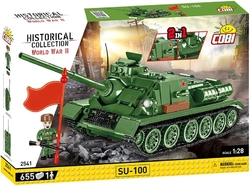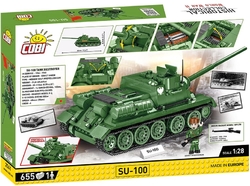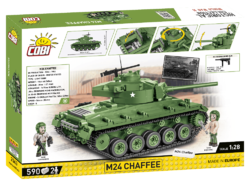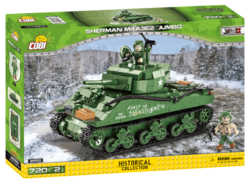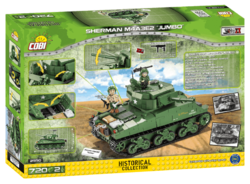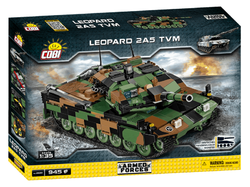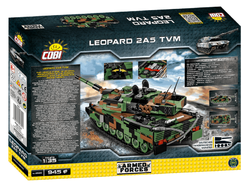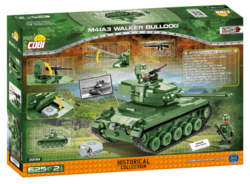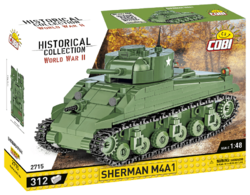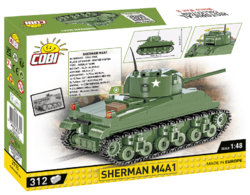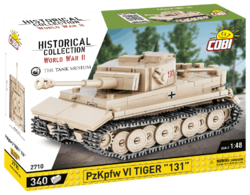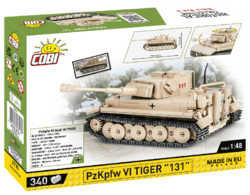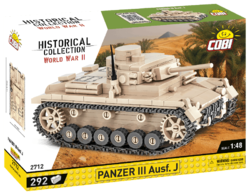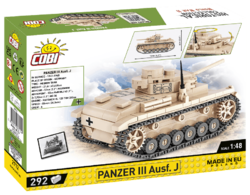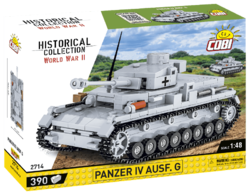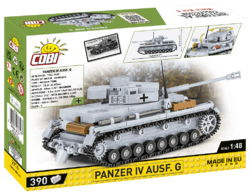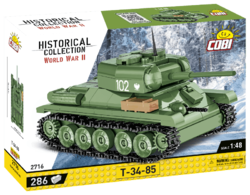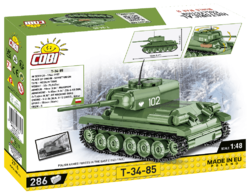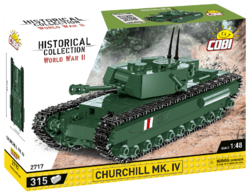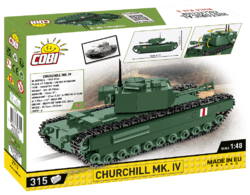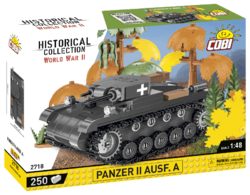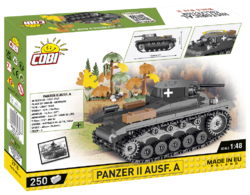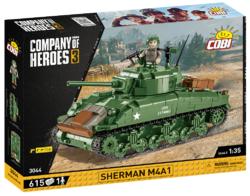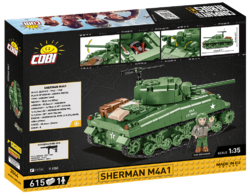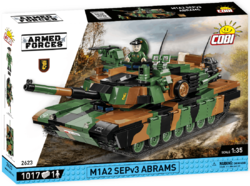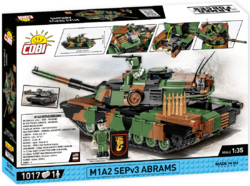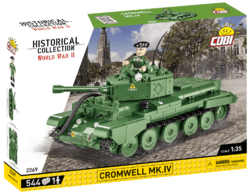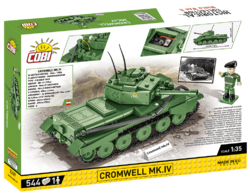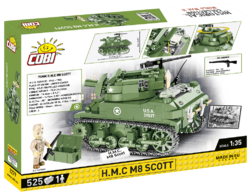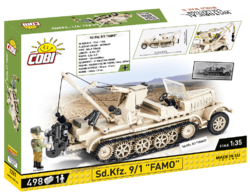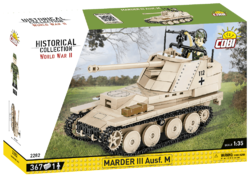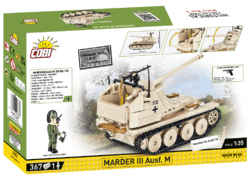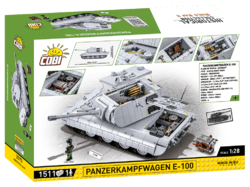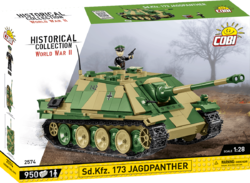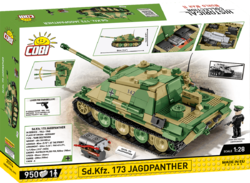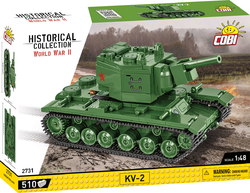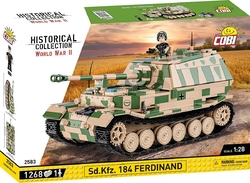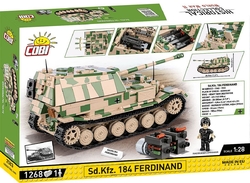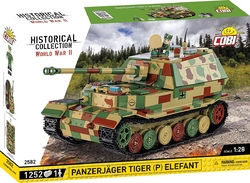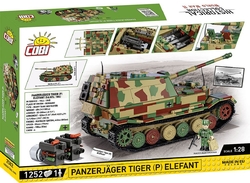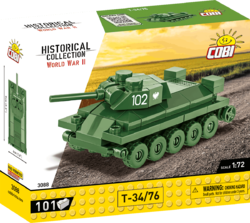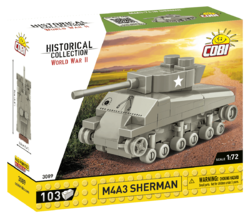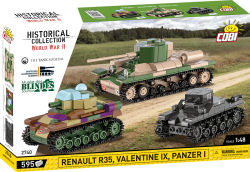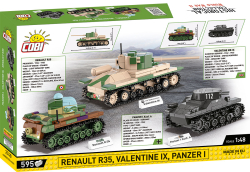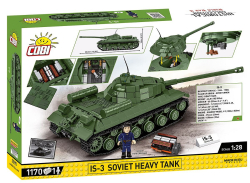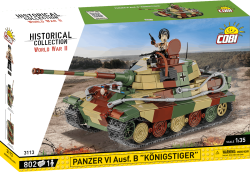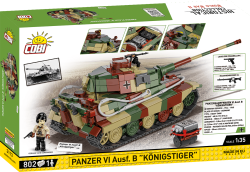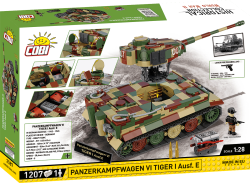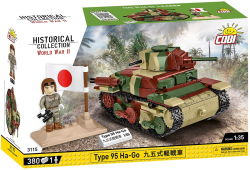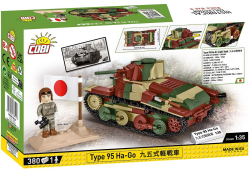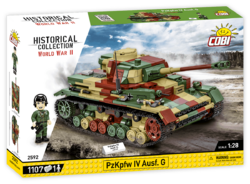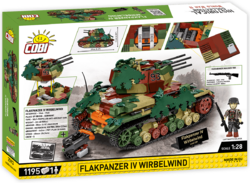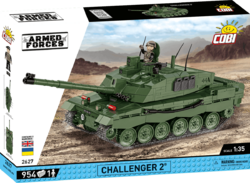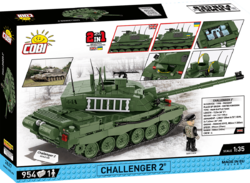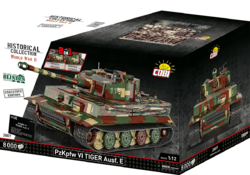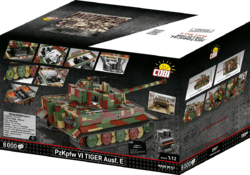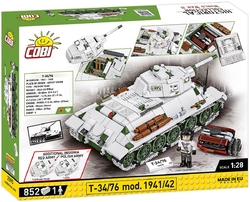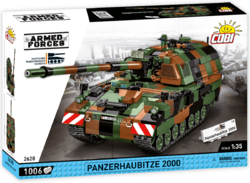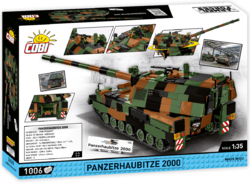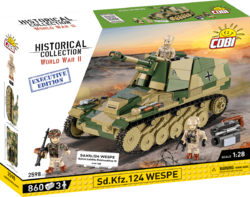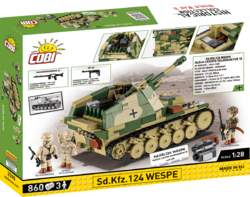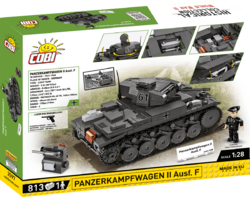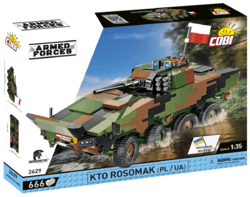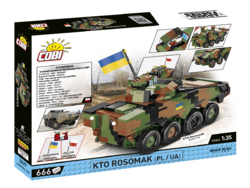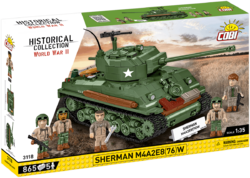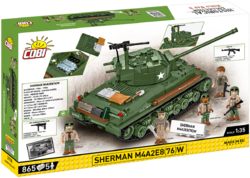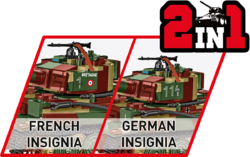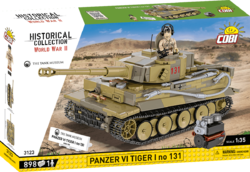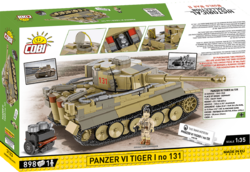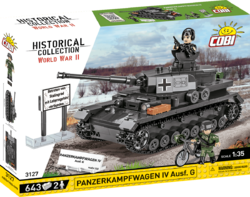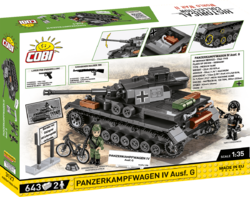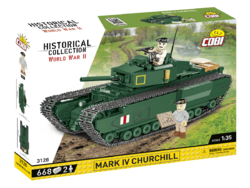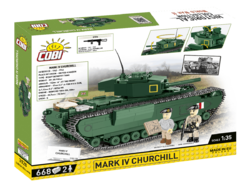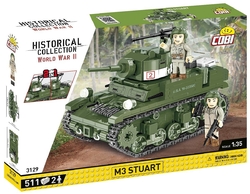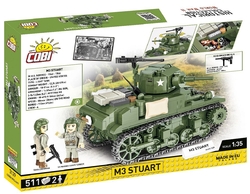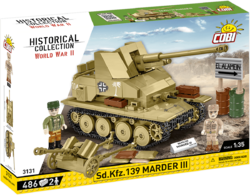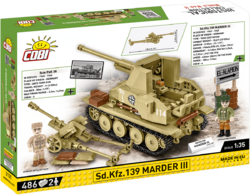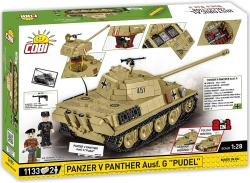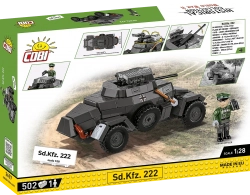
náměstí Hrdinů 109, 68603 Staré Město, Česká republika
| List Number: | COBI-2995 |
| EAN: | 5902251029951 |
| Warranty: | 24 months |
| Manufacturer: | COBI |
| Loyalty Points: | 10 |
| Price excluding VAT: | 975,80 Kč |

You know that: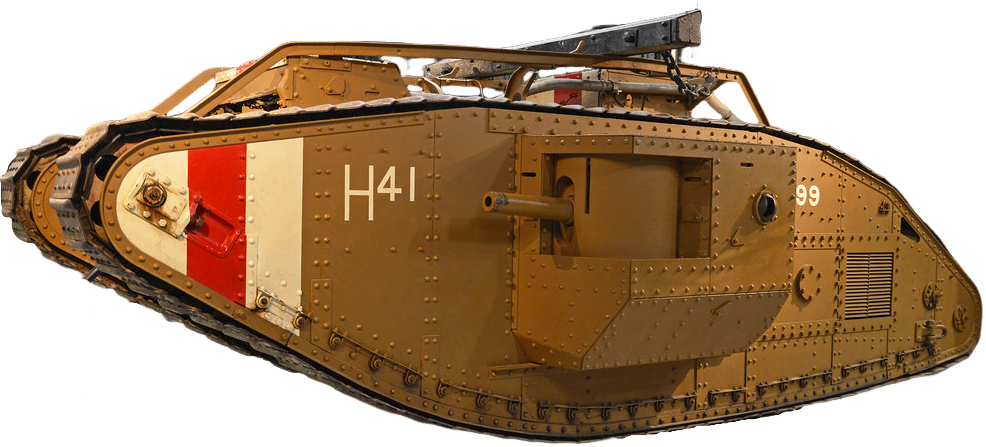
- The Mark V H41 tank, one of 11 preserved pieces worldwide, was manufactured in 1918 by the British company Metro-Cammell in Birmingham.
- It was an improved version of its predecessor, the Mark IV, with a rear support wheel.
- The first deployment of tanks in the Battle of the Somme forced the Germans to dig wider trenches that the tanks were unable to overcome, which is why the Mark V was longer than its predecessors. However, practice has shown that the maximum limit for crossing a trench remained at 3 meters. For this reason, the crew carried special logs made of glued wood that they could use as a bridge. However, climbing out of the tank and placing the log during the battle was an impossible task. The weight of the system, around 1500 kg, did not help either. The bridges were deployed in November 1917 near Cambrai and never again.
- Thanks to its greater length, the Mark V could have a couple of extra side doors. The crew used the doors to unload guns into newly conquered trenches.
- The tank could accommodate up to 15 crew members, but the truth is that the conditions inside the tank (temperature of 50°C, engine exhaust and hard driving) meant that the crew was unable to take any action after leaving the tank due to exhaustion.
- The Mark V tank also used Harry Ricardo's new engine and lever control for the direction of travel. In previous versions, it was necessary to coordinate the actions of four people to make a turn.
- The tank had a two-arm traffic light at the rear for one-way communication with other tanks in the formation.
- The location of one of the fuel tanks above the driver's head was extremely unfortunate. You can certainly imagine what happened after the tank was hit.
- A total of 400 units were produced in two versions.
- The Mark V was the last British rhomboid-shaped tank.
Technical parameters: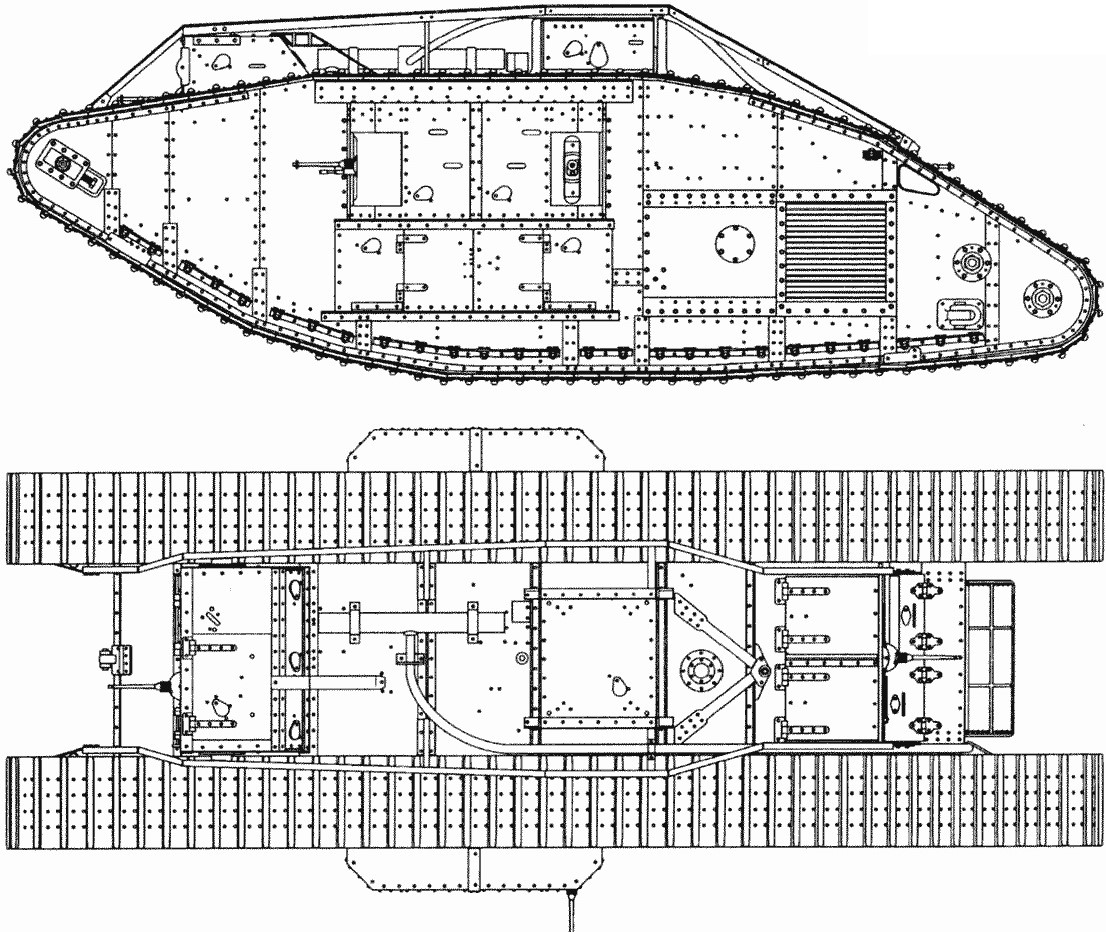
- dimensions: length 8.05 m, width 3.91 m, height 2.64 m
- weight 29,465 kg
- armor front 16 mm, side 12 mm, rear 12 mm, top and bottom 8 mm
- power unit 19 liter Ricardo petrol six-cylinder engine with 110 kW output
- fuel tank volume approx. 450 l
- fuel consumption 2.2 l / km
- number of gears 4 forward + 1 reverse
- road speed 4-7 km/h
- range 45-72 km
- main weapon 2x Hotchkiss cannon 57 mm caliber (207 rounds)
- secondary weapon 4x Hotchkiss Mk 1 machine gun 7.7 mm caliber
- crew 8
Zo spomienok generálmajora sira Johna Fredericka Charlesa Fullera:
"I remember the day our troops received their first Mark V. I climbed into one myself to test it for myself. The air was stifling and the engine noise was deafening. The machine shook with every movement, but it was clear that we had created something that had the potential to change the future of warfare. The officers, excited by the new tanks, proposed a test run, the aim of which was to overcome a pile of logs. The mechanic, delighted by the challenge, started the engine and slowly approached the pile of logs. We all watched in suspense as the huge pile of steel approached the wooden structure. Suddenly, however, the tank unexpectedly slid into a shallow muddy crater and the rear tracks began to spin helplessly. Just as it seemed that the machine would dig itself out of the mud, it rolled over the right track and landed with a thud on a supply cart full of canned beans. Beans with mud."
| Version (series) | 01/2025 |
|---|---|
| Number of figurines | 1 pcs |
| Scale | 1 : 35 |
| Recommended age | 10+ |
| Dimensions after assembly | 23 X 13 x 9 cm |
| Box dimensions | 45 x 28 x 7 cm |
| Number of pieces | 844 pcs |
| Package weight | 910 g |
| Collection | Great War |
| Contains luminous blocks | Ne |
| Material | Plastic |
| Compatible with other brand of kits | Yes |
Other categories
Related items
+ Skvělá komunikace
Všechno proběhlo bez problémů.
+ Rychlost dodání
- Nic
Velmi rychlé dodání.Úplná spokojenost.
+ Velmi rychlé dodání

Ondřej Vašťák
náměstí Hrdinů 109,
68603 Staré Město,
Česká republika













We respect your privacy.
Cobishop.cz uses cookies that are necessary for the proper functioning of the website (essential cookies), to measure traffic (analytical cookies) and to personalize advertising (marketing cookies). In order to use cookies we need your kind consent. Thank you for helping us to improve our services. Click HERE for detailed information.








